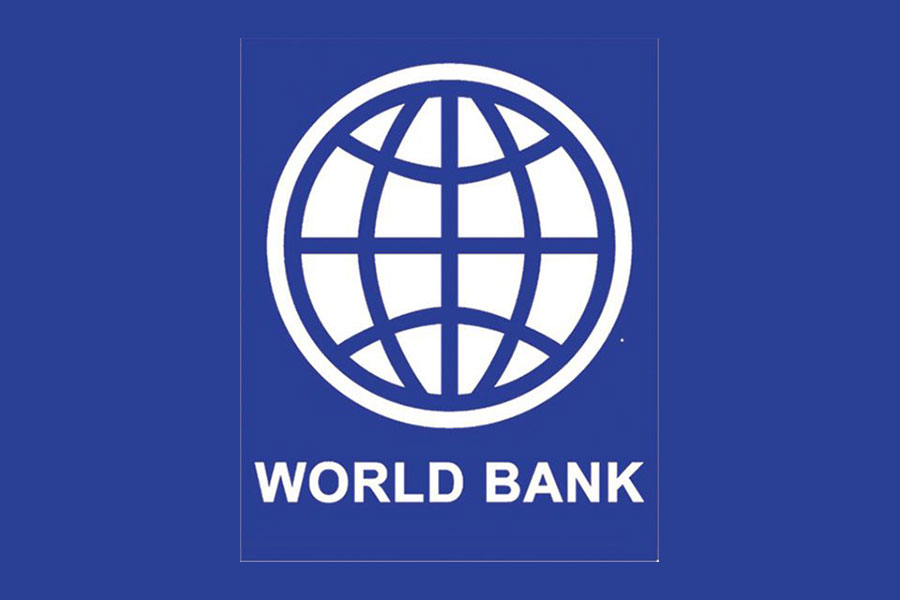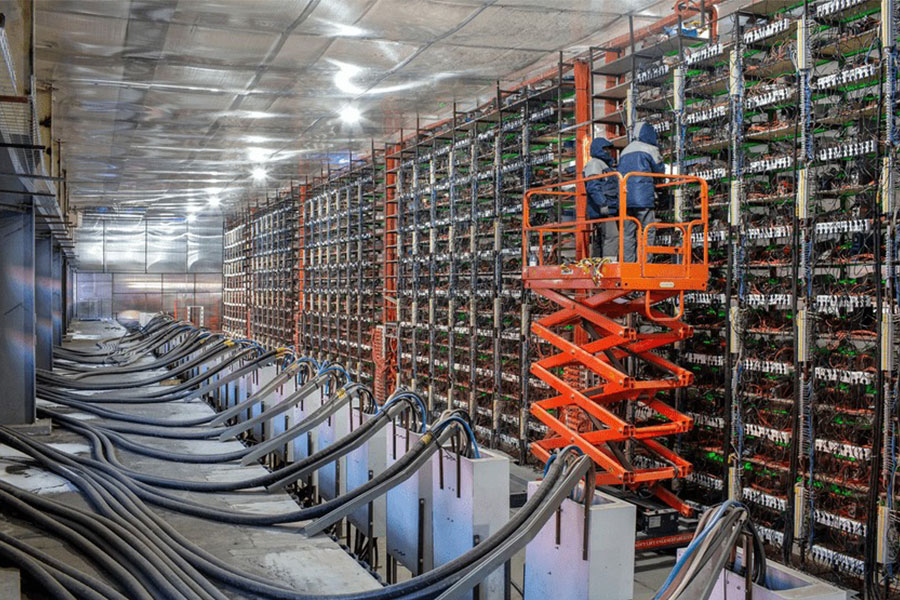
Radar | Jun 25,2022
Apr 13 , 2024
By Daron Acemoglu
The ancient Chinese concept of "yin and yang" attests to humans' tendency to see patterns of interlocked opposites in the world around us, a predilection that has lent itself to various theories of natural cycles in social and economic phenomena. Just as the great medieval Arab philosopher Ibn Khaldun saw the path of an empire's eventual collapse imprinted in its ascent, the 21st-century economist Nikolai Kondratiev postulated that the modern global economy moves in "long wave" super-cycles.
But no theory has been as popular as the one – going back to Karl Marx – that links the destruction of one set of productive relations to the creation of another. Writing in 1913, the German economist Werner Sombart observed that, "from destruction a new spirit of creation arises."
It was the Austrian economist Joseph Schumpeter who popularised and broadened the scope of the argument that innovations perennially replace previously dominant technologies and topple older industrial behemoths. Many social scientists built on Schumpeter's idea of "creative destruction" to explain the innovation process and its broader implications. These analyses also identified tensions inherent in the concept.
For example, does destruction bring creation, or is it an inevitable by-product of creation? More to the point, is all destruction inevitable?
In economics, Schumpeter's ideas formed the bedrock of the theory of economic growth, the product cycle and international trade. But, two related developments have catapulted the concept of creative destruction to an even higher pedestal over the past several decades.
The first was the runaway success of Harvard Business School professor Clayton Christensen's 1997 book, "The Innovator's Dilemma," which advanced the idea of "disruptive innovation." Disruptive innovations come from new firms pursuing business models that incumbents have deemed unattractive, often because they appeal only to the lower end of the market. Since incumbents tend to remain committed to their business models, they miss "the next great wave" of technology.
The second development was the rise of Silicon Valley, where tech entrepreneurs made "disruption" an explicit strategy from the start. Google set out to disrupt the internet search business, and Amazon set out to disrupt the business of book selling, followed by most other retail areas. Then came Facebook with its mantra of "move fast and break things." Social media transformed our social relations and how we communicate in one fell swoop, simultaneously epitomising creative destruction and disruption.
The intellectual allure of these theories lies in transforming destruction and disruption from apparent costs into obvious benefits. But, while Schumpeter recognised that the destruction process is painful and potentially dangerous, today's disruptive innovators see only win-win. Hence, the venture capitalist and technologist Marc Andreessen writes: "Productivity growth, powered by technology, is the main driver of economic growth, wage growth, and the creation of new industries and new jobs, as people and capital are continuously freed to do more important, valuable things than in the past."
Now that hopes for artificial intelligence exceed even those of Facebook in its early days, we would do well to re-evaluate these ideas.
Innovation is sometimes disruptive by nature, and the process of creation can be as destructive as Schumpeter envisages it. History shows that unrelenting resistance to creative destruction leads to economic stagnation. But it does not follow that destruction ought to be celebrated. Instead, we should view it as a cost that can sometimes be reduced, not least by building better institutions to help those who lose out, and sometimes by managing the process of technological change.
Consider globalisation. While it creates important economic benefits, it also destroys firms, jobs, and livelihoods. If our instinct is to celebrate those costs, it may not occur to us to try to mitigate them. And yet, there is much more that we could do to help adversely affected firms (which can invest to branch out into new areas), assist workers who lose their jobs (through retraining and a safety net), and support devastated communities.
Failure to recognise these nuances opened the door for the excessive creative destruction and disruption Silicon Valley has pushed on us these past few decades. Looking ahead, three principles should guide our approach, especially when it comes to AI.
First, as with globalisation, helping those adversely affected is of the utmost importance and must not be an afterthought. Second, we should not assume that disruption is inevitable. As I have argued previously, AI need not lead to mass job destruction. If those designing and deploying it do so only with automation in mind (as many Silicon Valley titans wish), the technology will create only more misery for working people. But it could take more attractive alternative paths. After all, AI has immense potential to make workers more productive, such as by providing them with better information and equipping them to perform more complex tasks.
The worship of creative destruction must not blind us to these more promising scenarios, or to the distorted path we are currently on. If the market does not channel innovative energy in a socially beneficial direction, public policy and democratic processes can do much to redirect it. Just as many countries have already introduced subsidies to encourage more innovation in renewable energy, more can be done to mitigate the harms from AI and other digital technologies.
Third, we must remember that existing social and economic relations are exceedingly complex. When they are disrupted, all kinds of unforeseen consequences can follow. Facebook and other social media platforms did not set out to poison our public discourse with extremism, misinformation, and addiction. But in their rush to disrupt how we communicate, they followed their principle of moving fast and then seeking forgiveness.
We urgently need to pay greater attention to how the next wave of disruptive innovation could affect our social, democratic, and civic institutions. Getting the most out of creative destruction requires a proper balance between pro-innovation public policies and democratic input. If we leave it to tech entrepreneurs to safeguard our institutions, we risk more destruction than we bargained for.
PUBLISHED ON
Apr 13,2024 [ VOL
25 , NO
1250]


Radar | Jun 25,2022

Viewpoints | Jun 21,2025

Commentaries | Nov 01,2025

Viewpoints | May 02,2024

Advertorials | Sep 05,2024

Editorial | Mar 19,2022

Commentaries | Aug 30,2025

Radar | May 07,2022

Commentaries | Jun 14,2025

Fortune News | Jan 19,2024

Photo Gallery | 180729 Views | May 06,2019

Photo Gallery | 170922 Views | Apr 26,2019

Photo Gallery | 162016 Views | Oct 06,2021

My Opinion | 137309 Views | Aug 14,2021

Dec 22 , 2024 . By TIZITA SHEWAFERAW
Charged with transforming colossal state-owned enterprises into modern and competitiv...

Aug 18 , 2024 . By AKSAH ITALO
Although predictable Yonas Zerihun's job in the ride-hailing service is not immune to...

Jul 28 , 2024 . By TIZITA SHEWAFERAW
Unhabitual, perhaps too many, Samuel Gebreyohannes, 38, used to occasionally enjoy a couple of beers at breakfast. However, he recently swit...

Jul 13 , 2024 . By AKSAH ITALO
Investors who rely on tractors, trucks, and field vehicles for commuting, transporting commodities, and f...

Nov 1 , 2025
The National Bank of Ethiopia (NBE) issued a statement two weeks ago that appeared to...

Oct 25 , 2025
The regulatory machinery is on overdrive. In only two years, no fewer than 35 new pro...

Oct 18 , 2025
The political establishment, notably the ruling party and its top brass, has become p...

Oct 11 , 2025
Ladislas Farago, a roving Associated Press (AP) correspondent, arrived in Ethiopia in...

Nov 2 , 2025
The National Bank of Ethiopia (NBE) has scrapped the credit-growth ceiling that had s...

Nov 2 , 2025 . By SURAFEL MULUGETA
The burgeoning data mining industry is struggling with mounting concerns following th...

Nov 2 , 2025 . By YITBAREK GETACHEW
Berhan Bank has chosen a different route in its pursuit of a new headquarters, opting for a transitional building instea...

Nov 2 , 2025 . By BEZAWIT HULUAGER
Nib International Bank S.C. has found itself at the epicentre of a severe governance...